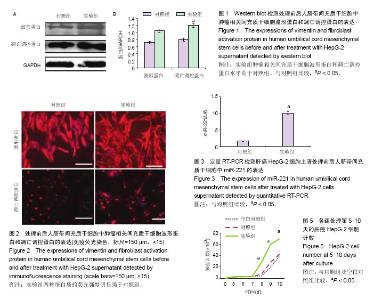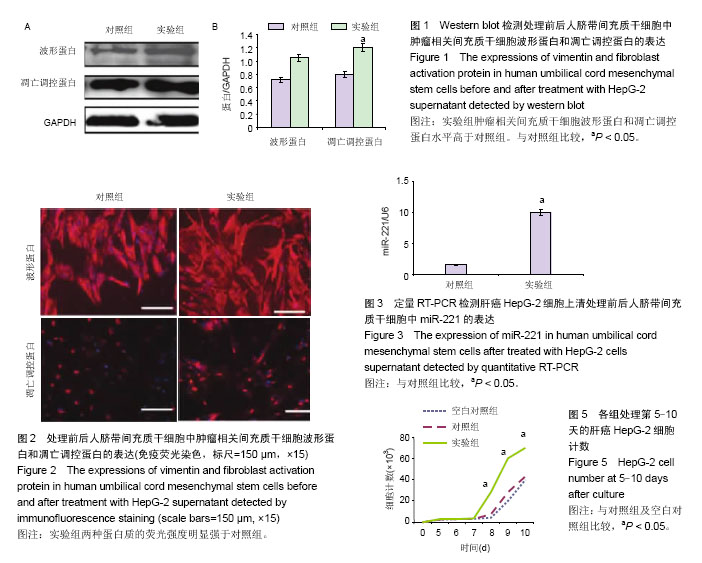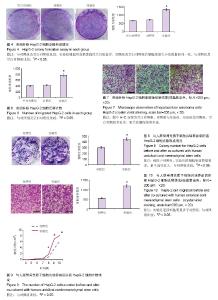| [1] Moon HS.Chemopreventive effects of alpha lipoic acid on obesity-related cancer. Ann Nutr Metab.2016;68(2):137-144.[2] Li ZG,Lin ZC,Mu HY.Polysplenia syndrome with splenic and skeletal muscle metastases from thyroid carcinoma evaluated by FDG PET/CT: case report and literature review: a care-compliant article.Medicine(Baltimore).2016;95(4):e2532.[3] Albini A,Sporn MB.The tumour microenvironment as a target for chemoprevention.Nat Rev Cancer.2007;7(2):139-147.[4] Studeny M, Marini FC, Champlin RE, et al. Bone marrow-derived mesenchymal stem cells as vehicles for interferon-β delivery into tumors. Cancer Res.2002;62(13): 3603-3608.[5] Studeny M,Marini FC,Dembinski JL,et al.Mesenchymal stem cells: Potential precursors for tumor stroma and targeted-delivery vehicles for anticancer agents.J Natl Cancer I.2004;96(21):1593-1603.[6] Menon LG,Picinich S,Koneru R,et al.Differential gene expression associated with migration of mesenchymal stem cells to conditioned medium from tumor cells or bone marrow cells.Stem Cells.2007;25(2):520-528.[7] Vichez V,Turcios L,Marti F,et al.Targeting Wnt/β-catenin pathway in hepatocellular carcinoma treatment.World J Gastroenterol.2016;22(2):823-832.[8] Li P,Wu M,Wang J,et al.NAC selectively inhibit cancer telomerase activity: a higher redox homeostasis threshold exists in cancer cells.Redox Biol.2015;8:891-897.[9] Bergfeld SA,Declerck YA.Bone marrow-derived mesenchymal stem cells and the tumor microenvironment.Cancer Metast Rev.2010;29(2):249-261.[10] Han Z,Jing Y,Zhang S,et al.The role of immunosuppression of mesenchymal stem cells in tissue repair and tumor growth. Cell Biosci. 2012;2(1):1-8.[11] De Miguel MP,Fuentes-Julian S,Blazquez-Martinez A,et al.Immunosuppressive properties of mesenchymal stem cells: Advances and applications.Curr Mol Med.2012; 12(5):574- 591.[12] 郑盛,杨涓,殷芳,等.脐带间充质干细胞移植治疗大鼠急性肝功能衰竭以及移植途径的选择[J].中华器官移植杂志,2014,35(12): 747-752.[13] Hsiao C,Tomai M,Glynn J,et al.Effects of 3D microwell culture on initial fate specification in human embryonic stem cells. Alche J.2014; 60(4): 1225-1235.[14] Ferlay J,Shin HR,Bray F,et al.Estimates of worldwide burden of cancer in 2008: GLOBOCAN 2008.Int J Cancer.2010; 127(12):2893-2917.[15] Droujinine IA,Eckert MA,Zhao W.To grab the stroma by the horns: From biology to cancer therapy with mesenchymal stem cells.Oncotarget.2013;4(5):651-664.[16] Crassini K,Mulligan SP,Best OG.Targeting chronic lymphocytic leukemia cells in the tumor microenviroment: A review of the in vitro and clinical trials to date. World J Clin Cases.2015;3(8):694-704.[17] Chanthra N,Payungporn S,Chuaypen N,et al.Association of Single Nucleotide Polymorphism rs1053004 in Signal Transducer and Activator of Transcription 3 (STAT3) with Susceptibility to Hepatocellular Carcinoma in Thai Patients with Chronic Hepatitis B.Asian Pac J Cancer Prev.2015; 16(12):5069-5073.[18] Li HJ, Sun QM, Liu LZ, et al. High expression of IL-9R promotes the progression of human hepatocellular carcinoma and indicates a poor clinical outcome. Oncol Rep. 2015;34(2): 795-802.[19] Yang YM,Lee CG,Koo JH,et al.Gα12 overexpressed in hepatocellular carcinoma reduces microRNA-122 expression via HNF4α inactivation, which causes c-Met induction. Oncotarget.2015;6(22):19055-19069.[20] Prockop DJ,Oh JY.Mesenchymal stem/stromal cells (MSCs): Role as guardians of inflammation.Mol Ther.2012; 20(1): 14-20.[21] Hamada H,Kobune M,Nakamura K,et al.Mesenchymal stem cells (MSC) as therapeutic cytoreagents for gene therapy. Cancer Sci.2005;96(3):149-156.[22] Song B,Kim B,Choi SH,et al.Mesenchymal stromal cells promote tumor progression in fibrosarcoma and hepatocellular carcinoma cells.Korean J Pathol.2014;48(3): 217-224.[23] Cuiffo BG,Campagne A,Bell GW,et al.MSC-regulated microRNAs converge on the transcription factor FOXP2 and promote breast cancer metastasis.Cell Stem Cell.2014; 15(6): 762-774. |



